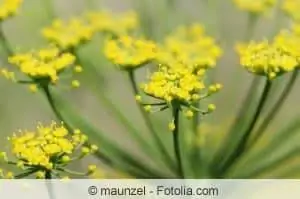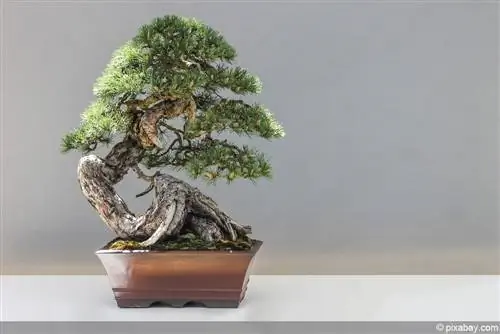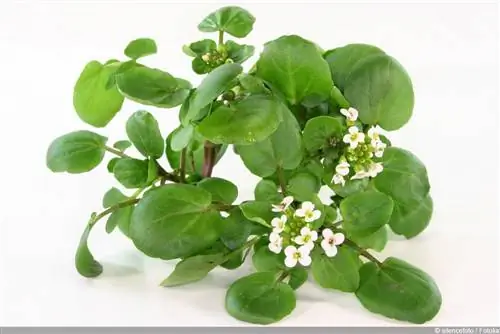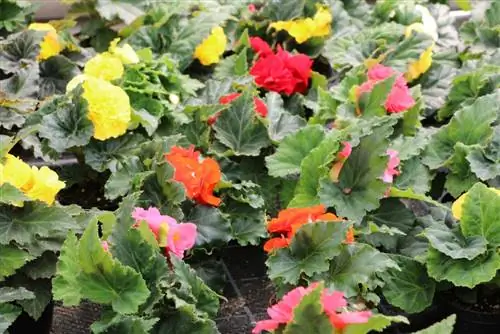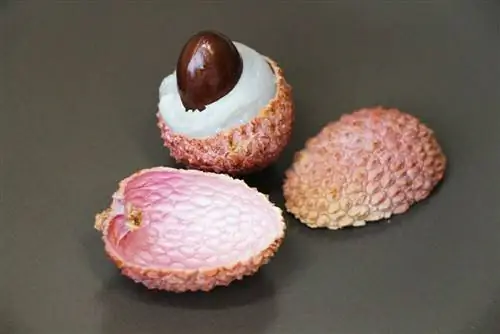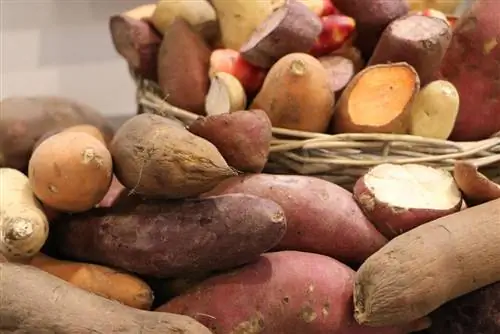- Author admin [email protected].
- Public 2023-12-17 03:39.
- Last modified 2025-01-24 12:45.
Bulb fennel, also known as sweet fennel, belongs to the umbelliferous family (Latin Apiaceae), like parsley, caraway, dill and celery. The fennel plant forms a white-green tuber above ground that can look elongated or round. Pinnate leaves grow from this tuber. The tubers are mostly used in the kitchen as a vegetable or salad, especially with fish, while the leaves are used for seasoning. Growing bulbous fennel is actually not that difficult if a few rules are followed.
Sowing and planting
When it comes to bulbous fennel, a distinction is made between early and late varieties. Accordingly, the early varieties are best grown in the greenhouse or indoors, while the late varieties can be sown directly outdoors. It should be noted that tuberous fennel plants planted early accumulate less nitrate. On the other hand, the risk of them shooting up is slightly greater. Because fennel tends to shoot up as the days get longer. Experienced hobby gardeners therefore resort to bolt-resistant, early varieties.
Pre-cultivation
For preliminary cultivation, you can use simple germination trays with normal sowing or garden soil. If you want to make planting easier, you can use so-called peat soaking pots or sowing trays made of peat. These can be planted out too. The seeds are sown at the beginning of March. The seeds are only thinly covered with soil and slightly moistened. The best germination temperature in the house or greenhouse is between 20 and 22 °C. The temperatures should not fall below 15 °C during the germination phase and should not rise above 16 °C afterwards so that the plants remain sturdy and robust. If temperatures are too high, root necks will develop that are too long and the chance of proper tubers will disappear. Five weeks later, the young plants can be planted in the garden.
Tip:
Make sure the substrate is moderately moist and do not water too much. To create a climate that promotes germination, you can cover the germination trays with foil. But don't forget to ventilate them every now and then.
Planting
The early varieties can be planted outdoors from mid-May, after the Ice Saints. However, it is advisable to cover the young plants with foil or fleece, especially at night. Because at night it can still be quite cold at this time. The planting distance is at least 25 cm so that the plants have enough space to form their tubers. There are now about 8 weeks until the harvest.
Tip:
Only use plants with at least 4 leaves. These grow best. The tuber base should always be above the ground so that the tubers can form well.
Early varieties:
-
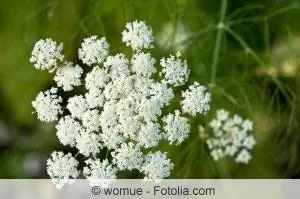
fennel shootproof: Argo, Selma
- for both early and late sowing: Bolognese
- firm, round tubers: Montavano, Selma
- classic early varieties: Atos, Zefa Fino
Direct sowing
Direct sowing can be done outdoors from mid-May to the end of June in rows with a distance of 40 cm and a furrow depth of 3 to 5 cm. From sowing, the culture period is 12 weeks. Make sure the beds are moderately moist and cover them with fleece or foil. As soon as the plants have emerged, they are separated to a distance of 25 cm.
Late varieties:
- shootproof: Rondo F 1,
- beautiful round tubers: Pollux, Orion F 1
- robust variety: Match,
- very profitable: Rudy, Heracles,
- very aromatic: Sirio, Finale
Pre-culture
Bulb fennel is a medium-strong feeder and is therefore in second place. This means it is second in the crop rotation.
The following are suitable as pre-cultures:
- Potatoes
- Winter leek
- Radish
- Spinach
- cabbage

Bulb fennel in mixed culture
In mixed culture, the different plants on a bed complement each other, both underground and above ground. If they fit together well, they do not crowd each other with their fruits and leaves. The different plants also take different nutrients from the soil and also release different substances themselves, so that there is an interplay between absorption and release.
Good neighbors for bulbous fennel are, for example:
- Lettuce
- Endives
- Lamb lettuce
- Peas
- Cucumbers
- Sage
Bad neighbors for bulbous fennel are:
- Beans
- Tomatoes
Crop rotation
After tuberous fennel or other umbelliferous plants such as anise, caraway or dill have been grown on a bed, it is advisable to then take a break from cultivation of 4 years.
Location
The bulbous fennel likes to grow in a sunny and protected location. Because that's where he feels most comfortable. For example, a bed on the south side of the house would be optimal. The soil should always be kept moist, otherwise the fennel will shoot up if it is too dry and hot. It also cannot tolerate large temperature fluctuations between day and night.
Floor
The bulbous fennel likes loose, deep, nutrient-rich and water-permeable soil.
Pouring
- high water requirement
- regular and even watering
- Don’t let the soil dry out
Tip:
Always make sure that the bulbous fennel is placed on soil that is not too dry, otherwise its bulbs may burst and dry out. To prevent the soil from drying out, it is best to mulch between the fennel rows with straw or other mulching material.
Fertilize
In order for bulbous fennel to form its tubers well, it needs a fast-acting nitrogen fertilizer. Therefore, some compost or horn meal should be worked into the soil before planting. The previous crop should therefore also be organically fertilized.
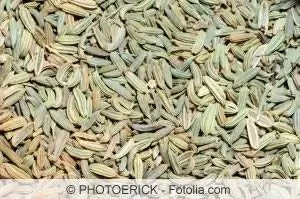
Harvest
The fennel sown in June ripens in September and the fennel planted in June in August. Only harvest the bulb fennel when it is a good fist size but still appears slightly stocky. Once it grows tall and forms flowers, it usually becomes hard and tastes woody and fibrous. Since bulbous fennel is sensitive to frost, the tubers should be harvested by the end of October at the latest. Using a sharp knife, cut the fennel bulbs very close to the ground. If you leave the roots in the ground, they will sprout and the green shoots can be used in soups or salads.
Storage
Freshly harvested bulbous fennel can be kept fresh in the refrigerator, wrapped in a damp cloth, for up to 3 days. It stays fresh for up to 30 days in an airtight box. However, you should first cut off the fennel greens. If you want to freeze the bulbous fennel, you can put it in the freezer when it is ready to eat and well packaged.
Diseases and pests
Downy mildew
Downy mildew can occur in unfavorable weather conditions. Infected plant parts must be disposed of with household waste. To combat downy mildew, there is a simple home remedy that has already proven itself well in practice. To do this, 1 part fresh milk is mixed with 9 parts water and sprayed on the affected plants. Repeat the procedure several times a week.
Aphids
If you have discovered curled leaves, galls or honeydew on the bulbous fennel, then the plants are infested with aphids. Predatory mosquitoes or parasitic wasps can help. A tea made from nettles, which is sprayed regularly when cooled, also helps.
Snails
But snails, especially field snails, also really like bulbous fennel and can really harm it, especially the young plants. Collecting in the evening or using beneficial insects such as nematodes can solve the snail problem. Likewise, regular soil loosening.
Conclusion
Once you've eaten bulb fennel you've grown yourself, you'll never want to be without it again. From then on, it simply belongs to the local kitchen. It's not that difficult to grow it yourself if you pay attention to a warm, protected and sunny location. Since it is a medium feeder, it is grown as a second crop, for example after radishes and spinach. It needs good organic fertilization such as compost. When sowing, always make sure that there are early and late varieties of bulb fennel.

